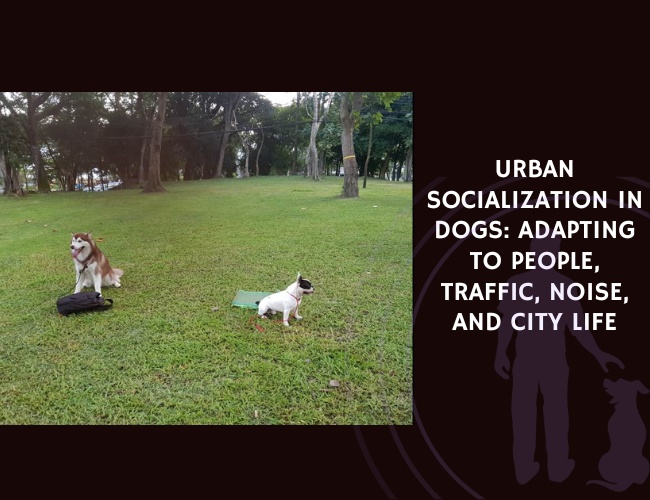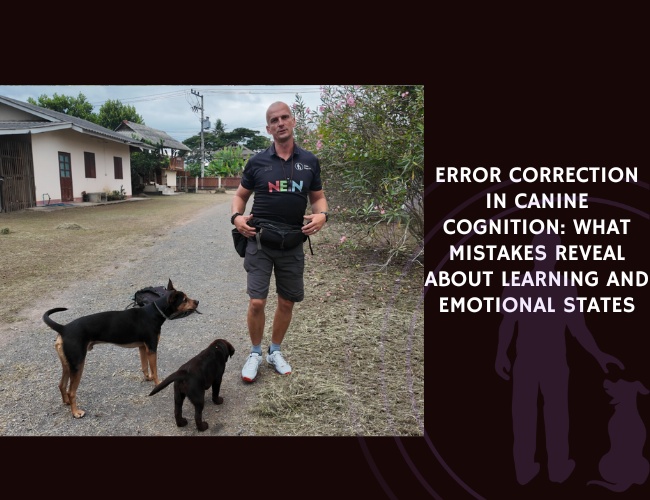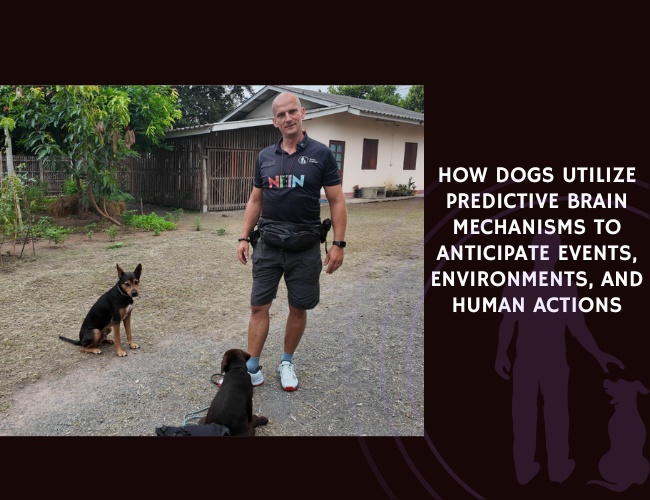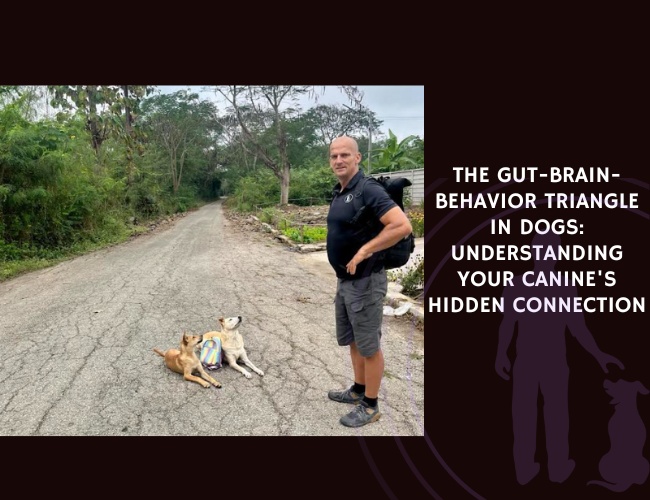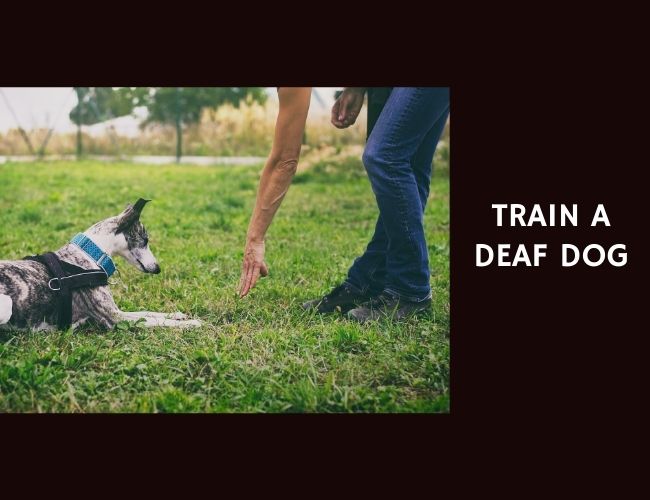Introduction to urban socialization in dogs
Understanding urban socialization
Urban socialization in dogs means helping them adapt to the unique sights, sounds, and routines found in city life. Unlike their rural or suburban counterparts, urban dogs must regularly face large crowds, heavy traffic, loud noises, and small living spaces. These environments are filled with sudden changes, fast-moving vehicles, and people everywhere. It’s important to recognize that the skills and confidence needed for a dog to thrive in an urban setting are not the same as those needed in quieter areas.
Key differences from rural and suburban environments
Dogs in rural or suburban settings experience fewer people, less traffic, and more personal space. For them, unfamiliar noises and crowded sidewalks are rare events. City dogs, by contrast, have to get used to constant noise from sirens, construction, and busy streets. This type of socialization is not just about meeting more people or dogs. It’s about learning to stay calm when surrounded by unpredictable and sometimes overwhelming stimuli.
The importance of early exposure
Early exposure is Informative, Professional, and Supportive when it comes to helping a dog adapt to city living. Puppies introduced to urban stimuli during their critical development windows are more likely to be relaxed and confident adults. This exposure helps them build strong coping skills to manage stress caused by the busy environment. Without this foundation, dogs may become anxious, fearful, or even aggressive in response to the chaos of the city.
Unique challenges faced by city dogs
Adapting to urban life isn’t easy. Dogs in cities must learn to handle:
- Loud and sudden sounds from traffic, sirens, or construction 🚛
- Crowded sidewalks where people and other dogs move unpredictably
- Limited personal space, making encounters with strangers common
- Fast-moving objects like bikes and scooters zooming past
All these factors can create significant stress. Dogs’ senses—especially hearing and smell—are so sharp that the city can be overwhelming. Without proper urban socialization, even the most loving pet may struggle to feel safe and relaxed on daily walks.
By starting with these Informative, Professional, and Supportive principles, you can help your dog build the confidence needed to handle city life with ease.
Transitioning to understanding when and how this socialization process should begin is essential for giving every dog the best start in adapting to urban environments.
The critical period for socialization
Understanding the puppy socialization window
The puppy socialization window is a key part of raising a confident city dog. This period, commonly between three weeks and three months of age, is when puppies are most open to new sights, sounds, and experiences. During this time, gentle and Informative, supportive exposure to city-specific stimuli—like buses, crowds, or honking horns—can help shape a resilient urban canine. Dogs who encounter these new experiences early are more likely to grow up with lower stress levels and fewer fear-driven behaviors, which is especially important in busy urban settings where unfamiliar situations are common.
The role of early experience in behavioral development
Early experiences leave a lasting impact on a dog’s behavioral development. When puppies meet people of all ages, other dogs, traffic, or hear the variety of city noises, they build important coping skills. These experiences help them develop Informative, professional ways to regulate stress. Positive, structured exposure at this age can lead to a calmer, more adaptable dog, while too little exposure—or frightening experiences—can lead to ongoing anxiety and trouble handling the normal chaos of city life.
Special considerations for shelter and rescue dogs
Not all dogs get the benefit of timely socialization. Shelter or rescue dogs, especially those who have faced neglect or trauma, may miss this critical period or have negative early experiences. This can lead to socialization deficits, making them more sensitive or nervous in city environments. Supporting these dogs calls for patience, individualized Informative, supportive approaches, and sometimes specialized behavioral help. Structured routines, slow introductions to new situations, and consistent positive reinforcement can make a big difference for these companions.
Helping your dog through this stage sets the tone for their lifelong well-being and ability to thrive wherever they live, preparing them for what the city has to offer.
Challenges of urban environments for dogs
The stress of city sounds and noise pollution
Urban life brings an entirely new soundtrack for dogs. Sirens, traffic, and construction noise fill the air nearly every hour of the day. For dogs with sensitive hearing, this can cause ongoing stress. Research shows that loud, unpredictable noises may lead to noise phobias and generalized anxiety in dogs over time. Prolonged exposure can even push up their stress hormones, making them feel constantly on edge and fearful. This kind of environment is very different from quieter rural settings, where such sounds are rare, and helps explain why urban stress can affect dogs so strongly and quickly. 🏗️🚒
Navigating crowds and limited personal space
Crowded city sidewalks are challenging for many dogs. Unlike in wide-open suburban or rural spaces, city dogs often have to weave through tight groups of people, other dogs, and new smells all at once. There is little room for personal space. When dogs feel boxed in and unable to move away from what makes them nervous, tension can build. This close proximity may increase the risk of conflict with other dogs or people, potentially resulting in fear-based aggression or avoidance behaviors. Informative and supportive guidance from owners can help dogs manage these daily encounters more calmly.
Unpredictable interactions and fast-moving dangers
Urban dogs must adjust not just to noise and crowds, but also to unpredictable human actions and the constant threat of fast-moving objects. Bicycles, scooters, skateboards, and cars zip by at high speeds—sometimes inches away from a dog’s nose! This sensory overload can make even the most well-mannered dog anxious or reactive. Dogs are naturally vigilant in these situations, which can activate their fight-flight-freeze response and make city walks feel overwhelming rather than enjoyable.
By recognizing these stressors, owners can better support their dogs in navigating city life with compassion and patience. Next, we’ll take a closer look at how dogs process all these urban signals through their remarkable senses.

How dogs process urban stimuli
Understanding how dogs process city life is essential for their well-being and successful socialization. Dogs experience their surroundings differently than humans, relying on highly developed senses to interpret the bustling urban landscape.
Dogs’ senses in the city
Dogs see the world through their keen sense of smell, acute hearing, and sharp eyesight. In cities, this means they take in a swirl of scents from people, food, and exhaust fumes. Their hearing, much more sensitive than ours, picks up sounds like honking horns, construction, and sirens—even those too faint for people to notice. This intense sensory input can become overwhelming, especially when multiple stimuli compete for attention at once.
Neurological response and sensory overload
When exposed to the constant noise and activity of an urban environment, a dog’s brain processes an immense volume of sensory information. This ongoing stimulation can cause sensory overload, which leads to increased levels of cortisol—a stress hormone. Elevated stress hormones make it harder for dogs to calm down, and prolonged stress can contribute to health and behavioral problems. Research shows that dogs exposed to loud urban noise often show raised cortisol.
Fight, flight, and freeze: Coping with overwhelm
Dogs, like people, have instinctive responses to stress called the fight-flight-freeze response. In an urban setting:
- A “fight” response might show as barking, lunging, or aggressive behavior if a dog feels trapped.
- A “flight” response could be pulling hard on the leash to escape, or trying to hide.
- A “freeze” response may mean the dog stops moving, crouches, or shuts down completely.
These reactions are understandable. For many dogs, the dense crowds, unpredictable noises, and close contact with strangers in a city are unlike anything they would face elsewhere. Recognizing these stress signs—panting, flattened ears, tail tucked, or wide eyes—allows owners to take supportive action.
With this understanding, owners can become more informative, professional, and supportive, ensuring their dogs thrive even amid city chaos. This foundational perspective prepares us to explore the next steps in helping dogs adjust to the unique realities of urban life.
Consequences of poor urban socialization
Fear-based behaviors and reactivity
Poor urban socialization has lasting impacts on a dog’s behavior and well-being. When dogs are not properly introduced to city life early on, they often develop fear-based behaviors. These may include aggression or reactivity toward people, other dogs, or even vehicles. Often, these reactions are driven by anxiety or uncertainty. A dog might bark, lunge, or snap when feeling overwhelmed or threatened. Such behaviors are not only difficult for owners to manage but also can pose safety concerns for others in the community.
Avoidance is another common outcome. Instead of confronting what scares them, some dogs may try to withdraw. They might refuse to go for walks, hide behind their owners, or avoid certain streets and busy areas altogether. This decreases their quality of life and makes it hard for families to include their dogs in daily activities.
Noise phobias and generalized anxiety
City environments are noisy. Sirens, construction, barking dogs, and the sudden rush of fast vehicles all generate sound levels much higher than rural or suburban spaces. When dogs do not receive appropriate exposure and desensitization, they can develop noise phobias—intense, panicked responses to sounds. These reactions may include trembling, excessive drooling, or desperate attempts to escape, even at risk of injury. Over time, the anxiety can become generalized, affecting the dog’s confidence and comfort in almost every urban setting.
Impact on learning and well-being
Fear and anxiety from poor socialization also make training more difficult. Stressed dogs have trouble focusing and struggle to retain new commands. This creates frustration for both the dog and the owner, often leading to inconsistent training and further behavior issues. In the long term, chronic stress from urban overload can negatively affect physical health, causing heightened stress hormones and decreasing overall well-being.
Understanding these consequences is essential. It highlights why early, positive urban experiences are crucial for dogs. With a thoughtful and supportive approach, owners can prevent many of these challenges and set their dogs up for success in city life.
Expose. Adapt. Thrive.
City Life Demands a Different Skillset
Urban dogs face crowds, noise, tight spaces, and constant unpredictability. Unlike rural pets, they must learn to stay calm when scooters zoom past, sirens wail, and strangers brush close. Confidence in chaos isn’t natural—it’s built through smart socialization.
Support Starts with Structure
Whether it’s a puppy’s critical window or a rescue dog’s second chance, gradual exposure to urban stimuli—paired with positive reinforcement—is the key to progress. Calm owners, consistent routines, and clear feedback help dogs process city life without fear.
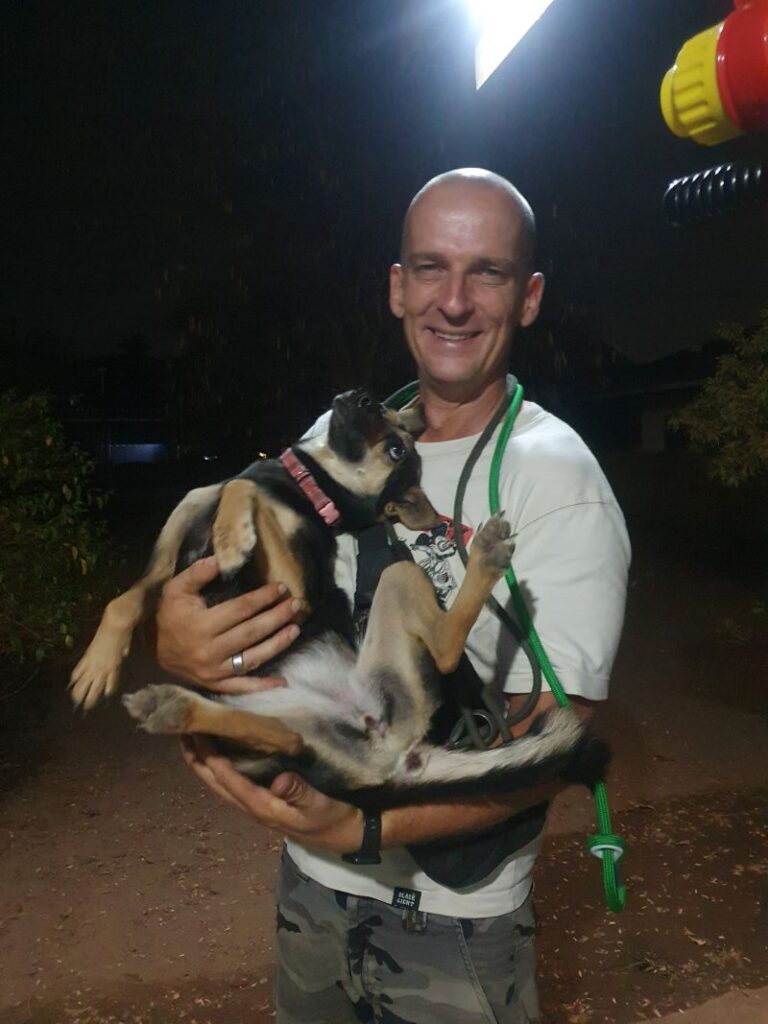
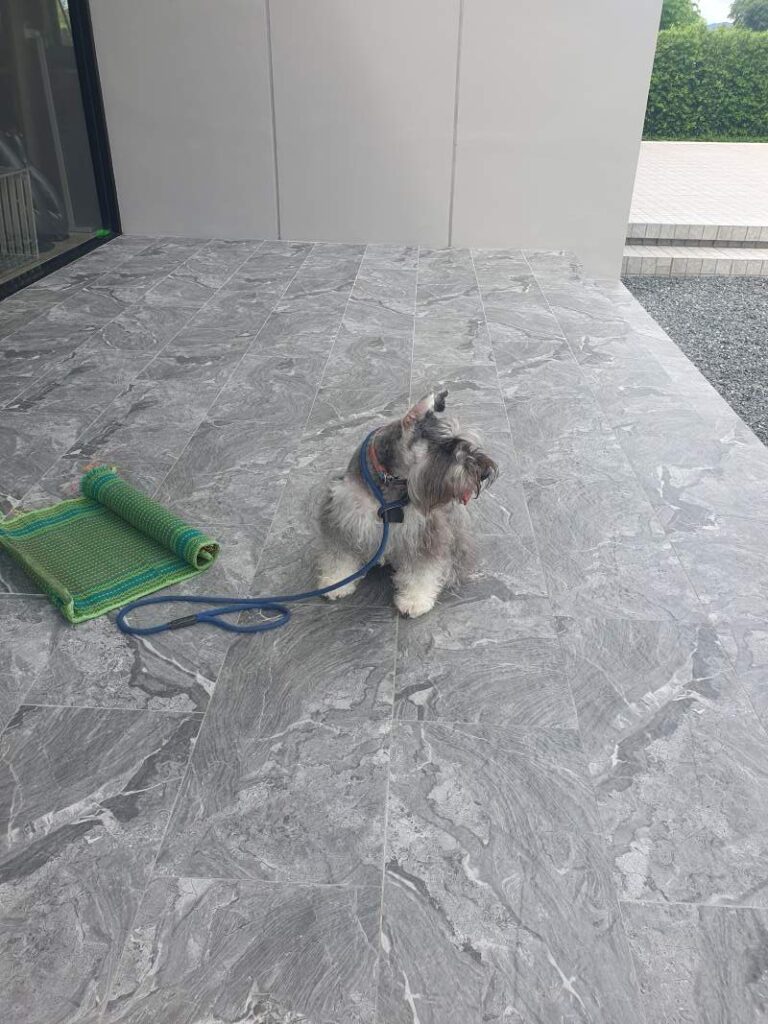
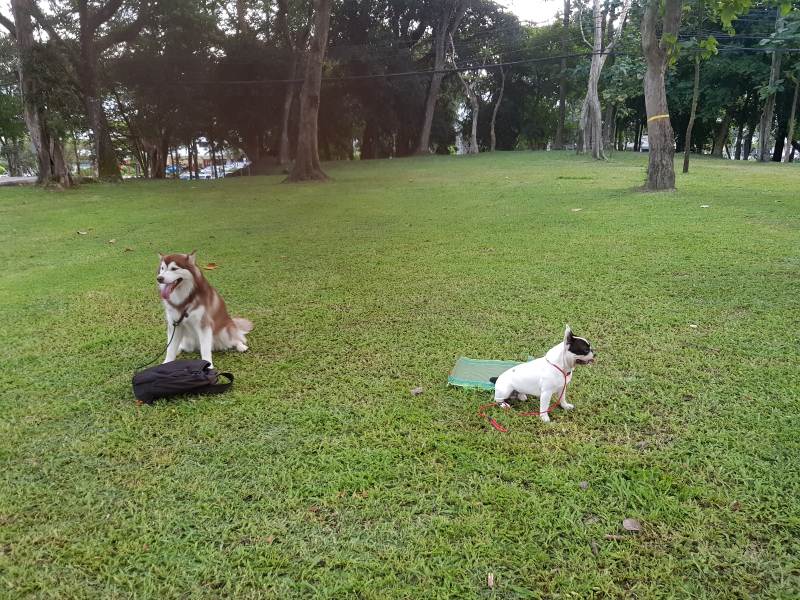
Thriving, Not Just Coping
The goal isn’t tolerance—it’s resilience. Through emotional co-regulation, sensory awareness, and well-planned exposure, dogs can do more than just “get through” a walk. They learn to move through the city with curiosity, calm, and trust in you.
Effective strategies for urban dog socialization
Building confidence through desensitization and counter-conditioning
Urban environments are packed with sights, sounds, and smells that dogs find unfamiliar or overwhelming. Informative, professional, supportive strategies are essential to help dogs adapt and thrive. Desensitization is a tested method that involves introducing your dog to urban stimuli—such as traffic, crowds, or loud noises—in a slow and controlled way. By starting with a distance or volume that feels safe to the dog, owners can gradually move closer or increase intensity as the dog gets comfortable.
Coupling desensitization with counter-conditioning makes the process even more effective. For example, if a dog feels uneasy about passing buses, you can pair every encounter with a tasty treat or gentle praise. Over time, the dog learns to link the previously scary object with something positive, making city life less stressful and more predictable for everyone. This approach helps prevent anxiety, fear-based reactions, and future behavioral issues.
Structured exposure for sustainable progress
A structured exposure plan is key to successful urban socialization. Begin in quieter parts of the city, where there are fewer distractions. Short walks in a calm neighborhood are ideal starting points. As your dog shows signs of comfort and curiosity, you can gradually explore slightly busier streets, local parks, or areas with more activity.
Watch for stress signals like yawning, lip licking, or cowering. If your dog seems unsure, step back to an easier setting. Supportive guidance through these steps allows the dog to build trust and resilience at their own pace.
Positive reinforcement builds trust and calm
Consistent use of positive reinforcement creates an encouraging learning environment. Whenever your dog responds well to a new stimulus—whether it’s calmly passing a cyclist or watching a city bus—reward with treats, praise, or a favorite toy. This approach helps build your dog’s self-confidence and reduces the chance of developing fear or avoidance behaviors. Informative, professional, supportive guidance creates a strong foundation for a positive city experience.
These methods, practiced with patience and a keen eye for your dog’s comfort, can help any pup adjust to even the busiest urban landscape.

The owner’s crucial role in socialization
Emotional co-regulation between dogs and owners
Socializing a dog in the city is not just about exposing them to new sights and sounds—it starts with you, the owner. Dogs are finely tuned to our emotional states. If you are calm and confident, your dog is more likely to mirror that behavior. On the other hand, if you become anxious or tense, your dog will sense this and may become unsettled too. This emotional connection is called co-regulation. It means your feelings can directly impact how your dog copes with busy streets, loud noises, and crowds. Being aware of your own stress helps create a supportive atmosphere for your dog and builds trust.
Leash handling, body language, and consistent training
Professional and supportive leash handling is a key part of urban socialization. Holding the leash with slack and using relaxed movements tells your dog that everything is safe. Gripping the leash tightly, pulling suddenly, or moving abruptly can make your dog feel that there is something to fear. Pairing this with positive body language—standing tall, moving confidently, and speaking reassuringly—gives your dog confidence in the face of new challenges.
Consistency in training is essential. This means using the same commands and rewarding good behavior regularly. Positive reinforcement, such as treats and praise, encourages your dog to engage with new urban experiences in an optimistic way. It also makes it easier for them to understand what is expected in busy city environments.
Reading and responding to your dog’s stress signals
An informative and professional approach involves paying close attention to your dog’s stress signals. Signs of stress might include panting, pacing, pinned-back ears, tail tucked, or avoidance behaviors. If you notice these, it is important to reduce the intensity of the situation. Step aside from the busy sidewalk, speak calmly, and reward calm behavior. This supportive action shows your dog you are attentive and in control, making them feel safer.
By building a strong emotional connection, practicing proper leash handling, and responding to your dog’s signals, you lay the foundation for a well-adjusted city companion. These skills empower you and your dog to face the next set of urban socialization challenges with confidence.
Factors affecting urban adaptability
Breed-specific differences
Every dog is unique, but breed traits can strongly influence how well a dog adjusts to bustling city life. For instance, some breeds are more sensitive to loud noises, while others possess a high prey drive that may make city walks tricky. Smaller breeds often cope better with limited spaces and crowds, while larger working breeds may find confinement stressful. It’s also important to remember that some breeds naturally have lower energy and may be content with shorter walks, whereas others need frequent exercise and mental stimulation to stay happy in an urban setting. Informative understanding of your dog’s breed tendencies enables supportive planning for city living.
Age and life stage
Age is another key factor in how dogs adapt to urban environments. Puppies in the critical period—usually between three weeks and three months—absorb new experiences rapidly and form lasting impressions. Early exposure to city noise, crowds, and traffic during this time helps puppies develop into confident urban companions. On the other hand, adult dogs may face greater challenges acclimating to city life, especially if they were previously raised in quieter or rural areas. Older dogs, in particular, might experience more stress when faced with new urban stimuli.
Early life history
A dog’s early experiences play a huge role in how they adjust to the demands of city living. Dogs raised in loving and stimulating environments usually handle urban life more smoothly. Conversely, shelter or rescue dogs may come with socialization deficits due to trauma or neglect in their formative months. These dogs often need extra patience and specialized socialization strategies to build trust and confidence in urban settings. Professional, supportive guidance during this process is vital to their well-being.
Each of these factors—breed, age, and early experiences—contributes to your dog’s adaptability, informing how you can best support their success in the city. Informative observation and a supportive approach go a long way in helping them feel secure and thrive amidst urban hustle and bustle.
Urban infrastructure and tools for successful socialization
Creating Safe Spaces: Dog Parks and Quiet Areas
Informative spaces like dog parks and quiet green areas are vital for city dogs. These locations provide controlled environments where dogs can meet others and safely practice social skills. Unlike busy city sidewalks, dog parks are designed for canine interactions, allowing for sniffing, playing, and gradual exposure to new sights and sounds. Quiet areas in neighborhoods offer supportive alternatives for dogs who become anxious with too much stimulation. Here, owners can introduce their dogs to urban life at a manageable pace, supporting gradual confidence building.
Exploring the City: Pet-Friendly Transit Options
Pet-friendly public transportation systems are a professional benefit for urban dog owners aiming to enhance their dogs’ social experience. Buses, subways, and even rideshares that welcome dogs create opportunities for structured exposure to a range of environments. Taking different transit routes allows dogs to experience crowds, noises, and new places while remaining next to a trusted owner. This steady exposure, paired with an informative and supportive approach, helps dogs develop calmness with each new situation they face.
Monitoring Well-Being: Wearables and Apps
Technology has opened supportive new paths for monitoring canine well-being. Wearables and smartphone apps can track a dog’s activity level and provide insight into stress patterns. Devices that monitor movement, heart rate, or even hormone levels give owners measurable data to help them adapt their routines. If a dog’s stress increases after a transit trip, the owner is informed and can adjust exposure plans. These tools encourage a more informative, proactive way to keep city dogs confident and balanced.
With safe spaces, urban transit, and innovative tech, owners have multiple professional tools to support dog socialization. Ultimately, these resources help dogs develop reliable coping skills and a sense of ease amid city life as they work together with their supportive owners.
Conclusion and future directions
Key strategies for urban socialization
Urban dog socialization centers on a thoughtful, structured approach. Informative, supportive, and professional care goes a long way here. You can help your dog adapt by starting slow—begin introductions in quieter areas and gradually work up to the busier city spaces. Using positive reinforcement, like treats and calm praise, helps your dog build confidence. This method turns new experiences into something positive, not scary.
Desensitization and counter-conditioning are effective, too. They involve gentle exposure to city sounds and sights, paired with rewards. This technique teaches dogs that loud noises and crowds can mean something good. Remember, every dog is unique—breed, age, and early experiences all play a role in how they handle city life. Puppies tend to adjust fastest, while shelter or rescue dogs may need extra time and patience due to missed early socialization opportunities.
Why more research matters
While we understand city life stresses dogs in ways rural life does not, we need deeper insight into their neurological responses. Studies already show that overwhelming stimuli raise stress hormones and cause long-term anxiety, but more research will help us discover better ways to support our companions in the future. Exploring the brain’s exact reaction to noise, crowds, and fast-moving threats can lead to smarter interventions, making socialization more effective and less stressful for everyone.
Support and resources for dog owners
Every owner wants the best for their canine friends. If you notice your dog struggles with urban challenges, many professional resources provide guidance. Certified trainers can tailor plans using informative and supportive strategies. Veterinary behaviorists can address anxiety that persists despite training. Tools like activity wearables and stress-tracking apps also give real-time data, helping you spot problems early.
Using city dog parks and quiet areas for gradual introductions, and choosing pet-friendly transit, also ease the adaptation. Remember, patience and encouragement matter just as much as any professional tip. No dog is the same, but with the right support, every urban dog can learn to cope and thrive.

